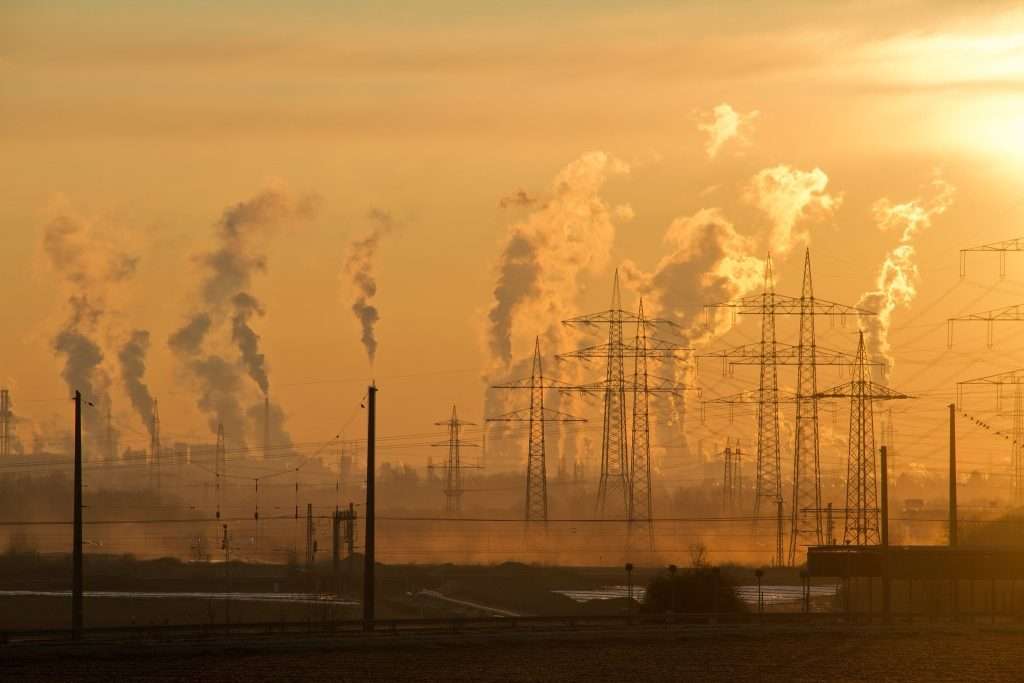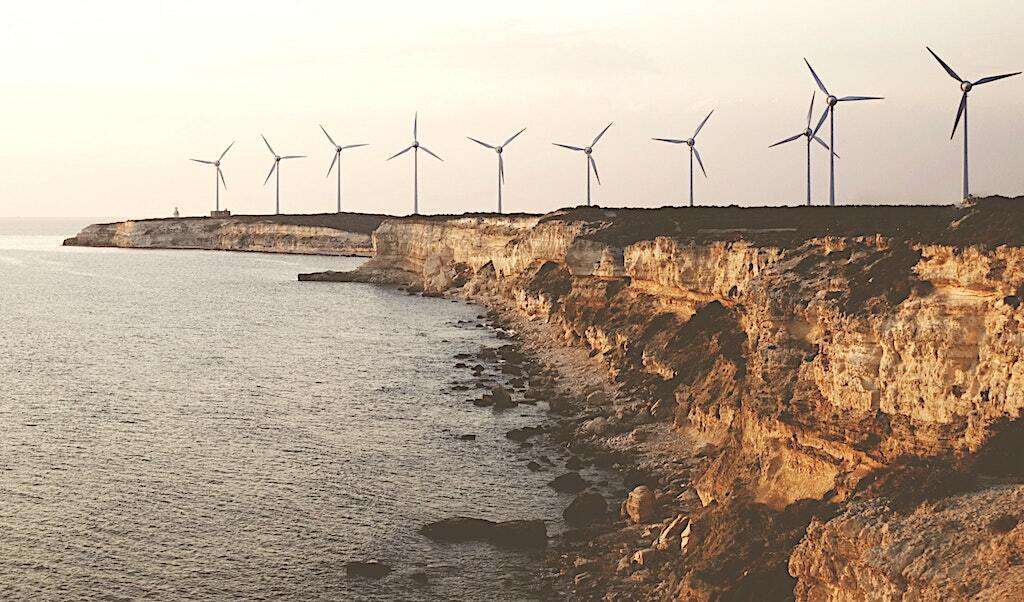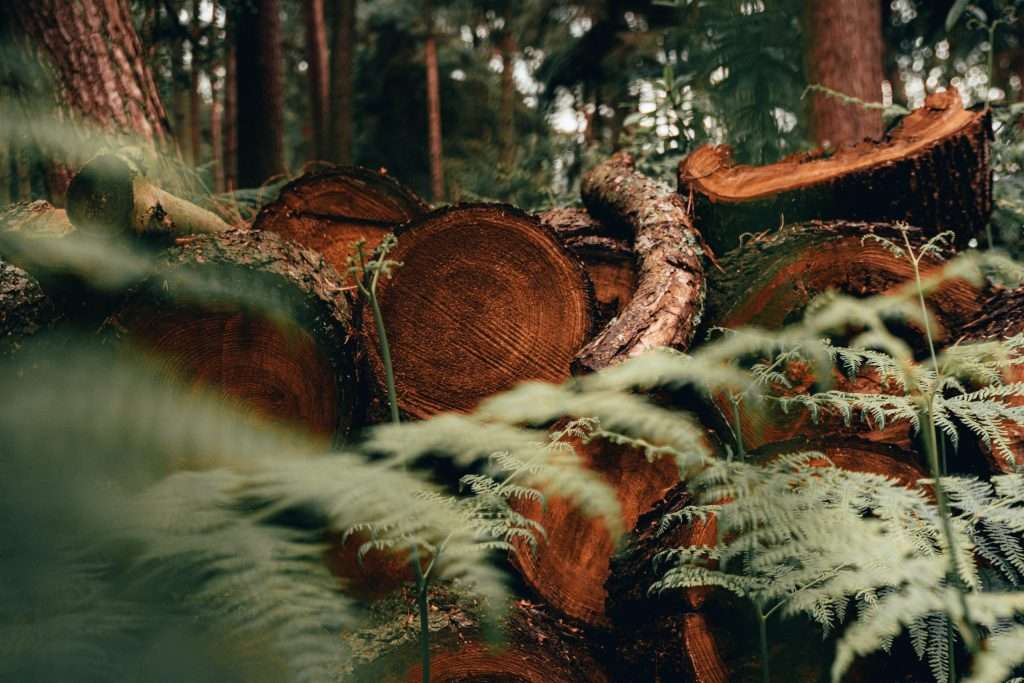Microsoft has just made a milestone carbon offset commitment. But the carbon market has come under intense scrutiny in recent years.
In March 2021, Danish renewable energy company Ørsted, Aker Carbon Capture, and Microsoft, signed an agreement to develop carbon capture and clean energy production via biomass-fired combined heat and power plants.
Following a 20-year contract granted to Ørsted by the Danish government earlier this week, Microsoft has announced it will purchase credits equal to 2.76 million metric tons of carbon dioxide captured at the Ørsted’s Asnæs Power Station over a period of 11 years. The Asnæs power station operates on wood chip fuel in Kalundborg and the Avedøre Power Station in Copenhagen runs a straw-fired boiler. The plants are expected to begin capturing and storing carbon by 2025, and by 2026, the two facilities will capture and store approximately 430,000 tonnes of biogenic CO2 annually.
Microsoft joins Google parent company Alphabet, Disney, and Delta airlines, among others, as one of the biggest buyers of carbon credits. With the addition of Microsoft, the companies have purchased more than 10 million metric tons of CO2e since 2017 — with Microsoft’s commitment representing 25 percent the credits.
Controlling climate change with carbon capture
Carbon capture efforts are crucial in the climate fight; the U.S. announced a carbon capture initiative last year when the Biden-Harris administration launched a $3.7 billion block of programs under the Bipartisan Infrastructure Law aimed at boosting private-sector investment into carbon removal as well as advancing monitoring and reporting for carbon management technologies. It also covers grants at state and local levels to develop regional carbon capture markets for products made from captured carbon.

“No matter how fast we decarbonize the nation’s economy, we must tackle the legacy pollution already in our atmosphere to avoid the worst effects of climate change,” U.S. Secretary of Energy Jennifer M. Granholm said in a statement last December. “President Biden’s Bipartisan Infrastructure Law provides the transformative investments needed to scale up the commercial use of technologies that can remove or capture CO2, which will bring jobs to our regions across the country and deliver a healthier environment for all Americans.”
The efforts can’t seem to happen fast enough. Earlier this week, the World Meteorological Organization (WMO) released a dire warning about climate change. The group said the Earth will surpass the 1.5°C temperature threshold set in the Paris Agreement. Moving past that threshold is considered a tipping point for climate disasters. And while the WMO says it’s not likely that we stay above 1.5°C, temperatures will fluctuate over the coming years, dipping in and out of that 1.5°C rise over pre-industrial levels, marking a new age for the state of the planet.
According to the UN’s Intergovernmental Panel on Climate Change (IPCC), the capture and storage of biogenic CO2 is one of the most important tools in the fight against climate change.
Article 6 of the Paris Agreement allows countries to voluntarily cooperate with each other to achieve emission reduction targets set out in their NDCs, says the World Bank. This allows countries to transfer carbon credits to meet their targets.
A polluted carbon market
The World Bank’s Climate Warehouse Program works to support the development of a global carbon market. It says the carbon market needs transparent systems to protect against issues such as double counting credits.
“If information from different countries’ and global registry systems can be reflected in a common system, then you considerably reduce the potential for the same carbon credit to be sold twice,” the World Bank says.
But both the cap-and-trade systems and carbon offsetting have made the carbon market highly controversial, however. Opponents of cap-and-trade argue that it has the potential to lead to the overproduction of pollutants as the prevalence of over-generous allowable levels may slow the move to cleaner energy sources.

Carbon offset schemes have also faced scrutiny as critics say it allows polluters to simply buy their way out of making changes to their own operations by purchasing credits in projects such as reforestation rather than making meaningful efforts to reduce their reliance on fossil fuels, which are the leading producers of anthropogenic emissions.
There are concerns about the reliability and effectiveness of carbon offset projects and the difficulty in measuring and verifying the actual amount of carbon saved. Critics also point out that the market’s volatility can undermine its efficiency and question the fairness of carbon trading, as wealthier countries and corporations can afford to buy more credits while still maintaining high emissions levels.
At the Danish facilities that Microsoft is supporting, they’re capturing carbon by burning biomass, another controversial method as many of the trees burned come from felled trees. Asnæs Power Station says its trees “come from sustainably managed production forests and consists of residues from trimming or crooked trees.”
But critics of these efforts also point to unintended social and ecological consequences, particularly when it involves forest thinning, such as for biomass, which can displace wildlife. Other carbon offset projects, such as large-scale plantations, may contribute to land grabs, displacement of local communities, and loss of biodiversity.
Furthermore, a major issue is the absence of a unified global carbon price, leading to discrepancies across different regions. These variations can create carbon leakage, where companies move operations to countries with less stringent carbon regulations.
Despite these criticisms, proponents of carbon markets believe that with stringent regulations, improved transparency, and robust monitoring, carbon markets can be part of the solution to the climate crisis. The aim is to utilize the power of the market to drive low-carbon innovation and make it financially attractive for industries to reduce their carbon footprint.

According to the World Bank, blockchain is one way to help make the carbon market more accountable. It says digital monitoring, reporting and verification (MRV) offers “huge potential” to reduce the time required to generate and trade an emission reduction. “Digital MRV can also reduce the transaction costs to ensure that more of the carbon revenues are directed toward mitigation projects.” It says the goal is a digital system that “ensures transparency, increases efficiency, and ensures greater robustness and accuracy of data related to emission reductions.”
One verified carbon credit scheme, Reducing Emissions from Deforestation and Forest Degradation, or REDD+, is designed to reward countries for protecting forests. It’s a model used by the Paris Agreement that sees governments held accountable for protecting and monitoring their forests’ health.
“Under REDD+, there is a rigorous process: a country must prove it has protected its rainforest, and it has made carbon reductions before credits can be sold,” Consuela Paloeng, National Forest Monitoring System Program manager and Reporting specialist from Suriname, told Forbes. “Compare this to the voluntary market that promises this, that, and the other to landowners.”
Carbon credits under fire
A report published earlier this year found carbon offsets purchased by Disney as well as Shell Oil, Salesforce, Gucci — and even the rock band Pearl Jam — to be “worthless” and could actually contribute to global heating. The report raises questions about the authenticity of carbon-neutral claims.
All of the companies purchased credits verified via Verra, the Washington D.C.-based world leader of carbon standards for the booming $2 billion voluntary offsets market. The report says that more than 90 percent of the project’s verified rainforest offset credits — a scheme largely favored in corporate offsetting — may actually be something called phantom credits, which don’t actually represent actual carbon reductions.
The research also found evidence of human rights issues at at least one of Verra’s verified projects in Peru. That program showed forced eviction efforts with homes being destroyed by park guards and police.
Verra currently approves 75 percent of all voluntary carbon offsets, with its rainforest program accounting for 40 percent of credits. But according to the research, 94 percent of the organization’s credits have no direct benefit to the environment. Further, only a handful of its rainforest-focused projects showed any evidence of reducing deforestation — a leading contributor to global warming and biodiversity loss.
Verra disagreed with the findings. “It is absolutely incorrect to say that 90 percent of Verra-certified REDD+ credits are worthless,” Robin Rix, Chief Legal, Policy, and Markets Officer, Verra, told The Guardian. “The article bases this false claim on extrapolations of three reports by two different groups, who assessed a small number of projects using their own methodologies.”

But Thales West, a lead author on the studies, says the findings suggest otherwise.
“I have worked as an auditor on these projects in the Brazilian Amazon and when I started this analysis, I wanted to know if we could trust their predictions about deforestation. The evidence from the analysis – not just the synthetic controls – suggests we cannot. I want this system to work to protect rainforests. For that to happen, we need to acknowledge the scale of problems with the current system,” West told The Guardian.
For the Microsoft partnership, Ørsted says that the program is working to add technologies that filter CO2 of the power plants. Ørsted says that will allow its biomass burning to become a carbon-negative energy source. The extra CO2 will be buried under the North Sea, the company says.
That, too, is a controversial practice. “You’re basically just landfilling,” Tip Meckel, a research scientist at the University of Texas’ Bureau of Economic Geology told Wired. He says it’s a stop-gap in destroying the planet. The real solution is in renewable energy resources.
That’s something Microsoft has also leaned into. It says that by 2025, it will run on 100 percent renewable energy with agreements in place for green energy at all of its data centers, buildings, and campuses.
It’s also working on its Scope 3 emissions, and it says by 2030, the company will remove more carbon that it emits, “setting us on a path to remove by 2050 all the carbon the company has emitted either directly or by electrical consumption since it was founded in 1975,” the company says. “We will achieve this through a portfolio of negative emission technologies (NET) potentially including afforestation and reforestation, soil carbon sequestration, bioenergy with carbon capture and storage (BECCs), and direct air capture (DAC).”
And according to Phillip Goodman, carbon removal portfolio director at Microsoft, carbon credits plays a key role in cleaning up its carbon debt. Goodman says for the biomass project to be effective, biomass has to be harvested “from appropriate areas” as well as account for all of its “process” emissions, he told The Verge. “We think that the details are crucial.”
Related on Ethos:


